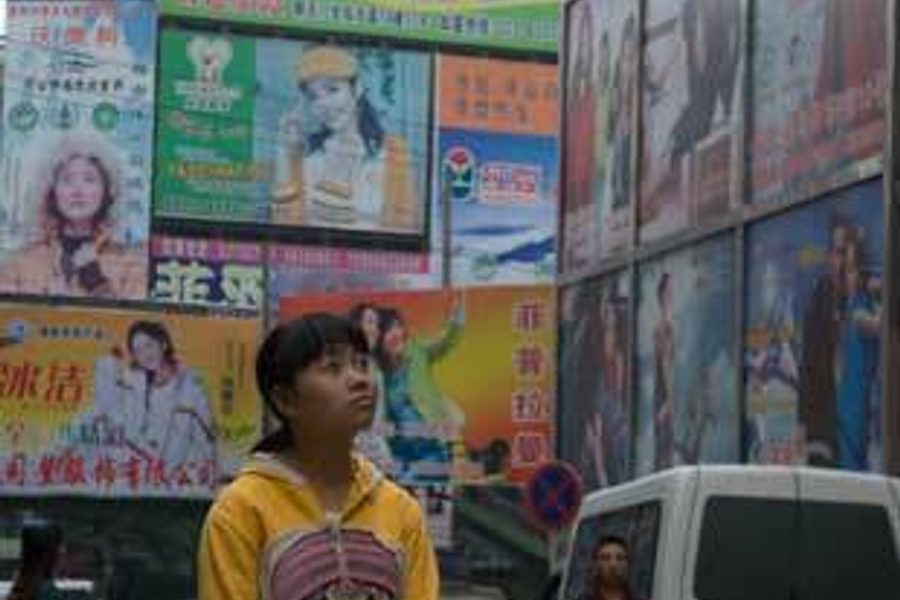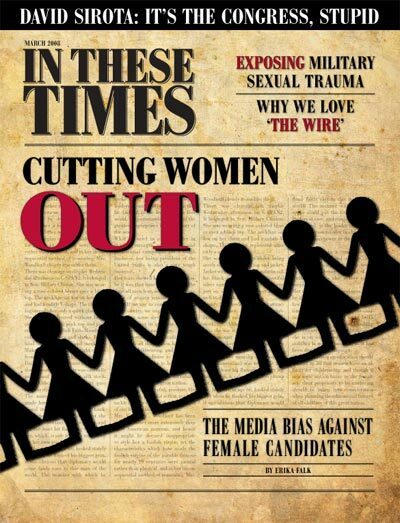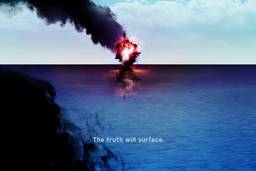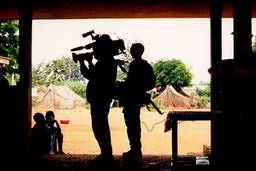
The Sundance Film Festival is now the most important U.S. market for independent film. Because of the writers’ strike, perhaps 15,000 additional folks from television and film programming and distribution showed up this year for the annual January festival, shopping for potential content. Because of that, Sundance can determine if the rest of us will see important new films on our television sets and in theaters. It’s both an arbiter and an indicator of media for public knowledge and action.
This year, documentaries were must-see films – as well as hot sellers. Some of the films worked hard to fill gaping information holes in our mass media. A good example was the Grand Jury Award-winner, Trouble the Water, a moving film about Hurricane Katrina as a social catastrophe, told by longtime Michael Moore crew members Tia Lessen and Carl Deal, using home-movie footage of a Ninth Ward resident.
Perhaps the most distinctive theme was what you might call “apocalyptic activism,” in which filmmakers appeal to viewers to mobilize political will for democratic change in the spirit of An Inconvenient Truth. These films showcased the passion of individual filmmakers, the lack of mainstream media coverage of systemic problems, and the hazards of trusting to individuals – however well-motivated – for critically important information. They’re also examples of what dot-com magnate and sports entrepreneur Ted Leonsis calls “filmanthropy,” an entrepreneurial approach to getting good word out through documentaries by involving potential partners and viewers in using, promoting and paying for them.
Leonsis’ own Sundance entry, Kicking It (directed by Susan Koch), was one of the most instantly successful “filmanthropy” films, a wild success with audiences and quickly sold to ESPN for worldwide release. It, too, raises questions even as it tugs effectively on heartstrings. The film chronicles the Homeless World Cup, a gimmicky festival in which homeless men from around the world play soccer, improving their self-esteem and team-building skills. This therapeutic, triumph-of-the-human-spirit approach, always a sentimental favorite, is hard to swallow as a global social program. But at the premiere, Leonsis proudly told the audience that they could help end homelessness by going to the website to support a team.
In Fields of Fuel, winner of the Audience Award, director Josh Tickell thumps appealingly for biodiesel as a way to reduce dependence on foreign oil and increase air, land and water purity, as well as national security. Tickell showcases an engaging persona as a confident, youthful activist, who evolves from a brash biodiesel nut to someone who understands organizing, partnership and the challenge of bucking corporate power. But he’s also pitching to people who aren’t moved by conservation, and he has a far more optimistic view of biofuels than do many environmental organizations, which note that corn production takes almost as many inputs as ethanol provides outputs. What’s more, high soy production could ravage rainforests. (Tickell does note that corn production for ethanol is far inferior to soy for biodiesel, but he doesn’t do a global calculation.) He also chronicles the long history of pro-oil policies that have deferred to Detroit, and he pushes viewers to support clean-fuel policies and to make clean-fuel choices.
The workmanlike and sometimes lovely Flow: For Love of Water, by Irena Salina, persuasively argues that chronic poor management imperils the planet’s water supply. It also shows how big business interests in privatized water, with the help of the politicians they buy off, are making problems worse. Species survival will depend on our ability to make politicians listen to us, the film argues, and flowthemovie.com offers some ideas. After this film, you’ll never buy bottled water again. But the makers hope that’s just the first step. Tearing down dams will be necessary, and that will take a powerful amount of political will, combined with big change in consumption habits for the electricity those dams provide.
IOUSA, by Patrick Creadon (beloved for the 2006 documentary Wordplay), makes a familiar argument – balancing the budget is a question of national, social and economic health – as it tracks members of a fiscal-responsibility coalition on a national tour. The chipper little group, leaning toward the conservative end of the spectrum, valiantly travels from hotel ballroom to hotel ballroom, carrying its message that politicians are punished for balancing budgets and so encourage spendthrift policies that guarantee our national indebtedness to other nations, especially China. The way out, the team argues, is to elect fiscally responsible politicians. Sadly, the film suffers from the crippling lack of charisma of its leading characters, including the U.S. Comptroller General David Walker, and often you feel bad for these earnest speakers facing a sprinkling of AARP types at their “town halls.” Furthermore, the film focuses narrowly on the little group, leaving no space for a counterargument.
Other, more traditional approaches to documentary films displayed seasoned craft, research and storytelling. They also revealed some of the strengths of traditional independent documentary – using stories to reveal social complexity and the human experience of a social reality.
Up the Yangtze, for instance, directed by Canadian Yung Chang and produced through the National Film Board of Canada, is aesthetically elegant, emotionally rich and politically provocative. A voyage of international tourists going up the Yangtze in a luxury liner is tracked through the experience of a young girl who joins the staff. Despite her dreams of high school, her family has sent her there from their soon-to-be-flooded farm by the Three Gorges Dam. Besides being an astonishingly multifaceted film that puts a human face – or, rather, faces – on globalization, Up the Yangtze is also a beautifully shot and paced film, which is best seen in a theater. You’ll be able to do that before it shows up on the public broadcasting series P.O.V. this year.
Peter Galison and Robb Moss’ Secrecy argues with gravity and grace that our national spy agencies are hobbled by secrecy policies inherited from the Cold War, and which can’t keep us safe in an open-information environment. This film reaches across partisan lines, appealing to those who see a need for national intelligence but fear its usefulness may be compromised. It’s a thoughtful and dense film, which trusts viewers to judge the argument for themselves. (It contrasted well with Morgan Spurlock’s Where in the World Is Osama bin Laden?, which was even more superficial than his Super Size Me; animation, video-game references and ADHD editing carry the shallow point that most Muslims worldwide are not terrorists and that they are scared of U.S. geopolitics.)
Sundance docs this year not only showcased excellent craft but also a passionate urgency to engage viewers as citizens. But apocalyptic activism is also an informational Wild West, where anyone can passionately promote anything.
Documentaries lack the traditional editorial approval process of mainstream media, a fact that has liberated some makers to take a fresh look at issues. Without context and discussion, however, such documentaries run the risk of merely becoming tools of new special interests.
Public media need vigorous public debate to go with them. Social networking tools combined with social movements that use them and a maturing field of citizen journalism that mixes up the professionals and amateurs could provide that debate.









